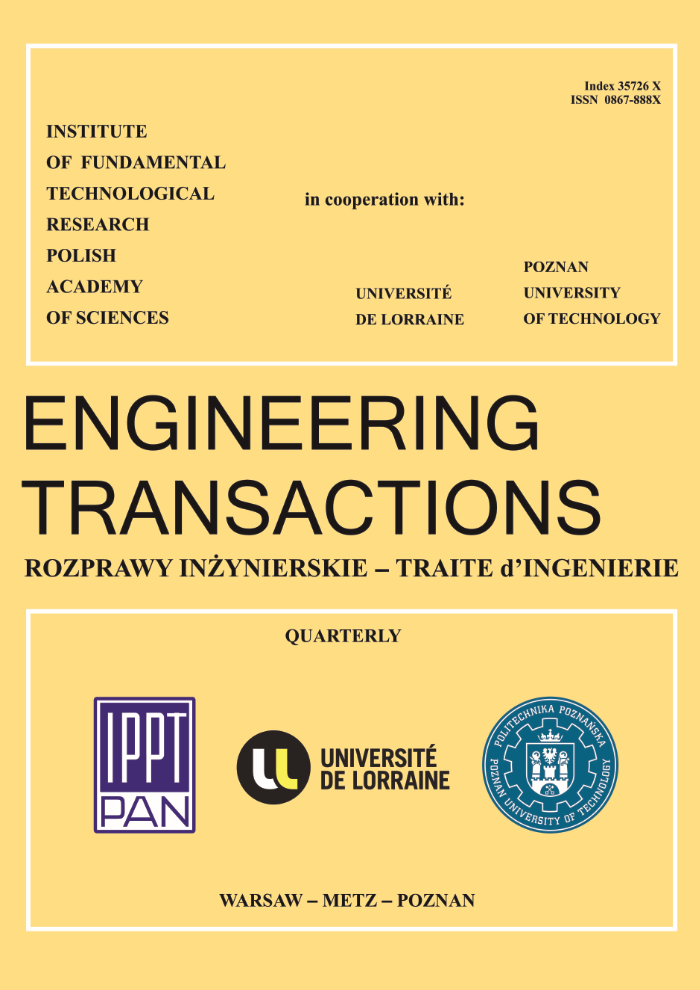Abstract
The foundations of the theory of creep of statically indeterminate prestressed structures
Dealt with in this paper Pare the foundations of a general theory of creep in statically indeterminate prestressed structures, in particular the derivation of systems of equations enabling the determination of the redundant quantities as functions of time; a general discussion of methods for solving such equations is included.
The considerations are based on the Volterra-Boltzmann general theory of linear creep, leading to systems of linear equations [see the system (2.21)].
On the basis of accurate solutions, consideration is given to the principal ways in which the theory can be simplified. These ways are: simplification of the equations of internal statical indeterminacy (in the case of concentrated reinforcement); simplification of the equations of external statical indeterminacy (continuous beams); transition to a homogeneous system (together with the case of prestressing reinforcement allowed to slide in its channels); and replacement of integral equations by differential equations. No practical examples are solved in this investigation. They will constitute the subject of a separate paper.
References
[2] R. Busemann, Kriechberechnung von Verbundtragern ureter Benutzung von zwei Kriechfasern, Bauing., 11 (1950).
[3] Z. Bychawski, Resolving Kernel of the Volterra Equation in the Case of the Generalized Creep Function, Arch. Mech.. Stos. 2 (1957).
[4] G. Colonnetti, Scienza de/le Construzioni, Turyn 1941.
[5] G. Colonnetti, Deformazioni plastiche e deformazioni viscose, Pont. Ac. iSci. Acta, t. 6, 24.
[6] F. Dischinger, Untersuchungen fiber die Knicksicherheit, die elastische Verformung und das Kriechen des Betons bei Bogenbriidken, Bauing. 35/36, 39/40 (1937).
[7] A. Habel, Der Einfluss des Kriechens und Schwindens auf die statisch unbestimmten Grdssen vorgespannter Duichlauftrager und Zweigelenkrahmen, Bet. Stahlb., 4 (1955).
[8] A.J. Iszlinski, Prodolnyje kolebanja stierżnia pri naliczii liniejnowo zakona poslediejstwja i relaksacji, Prikł. Mat. Mech. 1 (1940).
[9] P. Lardy, Eigenspannungen und vorgespannter Beton, Schweiz. Baurtg, 5 (1943).
[10] F. Leonhardt, Spannbeton für die Praxis, Berlin 1955.
[11] F. Levi, Sulla valutazione degli effetti dell eLastizita ritardata nei solidi iperstatici, Giorn. Gen. Civ. 7/8 (1949).
[12] F. Levi, G. Pizzetti, Fluage plasticite precontrainte, Pary2 1951.
[13] W. Olszak i J. Litwiniszyn, Nieliniowe zjawisko pewnego przeplywu cieczy jako model reologiczny, Arch. Mech. Stos. 4 (1953).
[14] W. Olszak, Z zagadnień teorii elementów uzwojonyah w świetle reologicznych własności materiałów, Arch. Mech. Stos. 2 (1954).
[15] M. Ritter, P. Lardy, Vorgespannter Beton, Zurych 1946.
[16] A.R. Rżanicyn, Niekotoryje woprosy miechaniki sistiem dieformirujuszczichsja wo wriemieni, Moskwa-Leningrad 1949.
[17] K. Sattler, Kriechen und Schwinden bei vorgespannten Verbund-Stahlbetonkonstruktionen, Bet. Stahib., 1, 2 (1954).
[18] V. Volterra, Sur requilibre des corps etastiques muttiptement connexes, Paryż 1907.
[19] V. Volterra, Lecons sur les fonctions de ligne, Paryż 1913.


